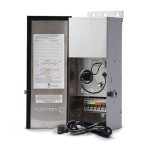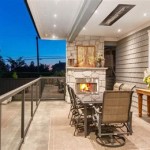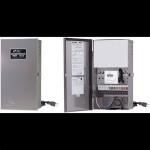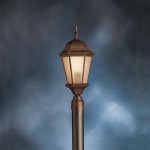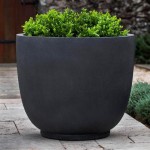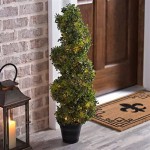Outdoor Disco Ball Light: Illuminating Outdoor Spaces with Retro Flair
Outdoor disco ball lights represent a fusion of nostalgia and modern outdoor lighting solutions. These shimmering spheres bring the vibrant, energetic atmosphere of a classic disco to gardens, patios, and event spaces. While traditionally associated with indoor dance floors, advancements in weatherproofing and lighting technology have made outdoor disco balls a viable and increasingly popular option for adding a touch of whimsy and unique illumination to outdoor environments.
The concept of an outdoor disco ball light extends beyond simply placing a reflective ball outside. Considerations must be made for the durability of the materials, the light source used, and the method of installation. Unlike their indoor counterparts, outdoor disco balls need to withstand exposure to the elements, including rain, wind, sunlight, and temperature fluctuations. This necessitates the use of rust-resistant materials, waterproof seals, and UV-resistant components to ensure longevity and optimal performance.
The illumination aspect also differs significantly. Outdoor environments demand a brighter and more robust light source to cut through ambient light and create the desired shimmering effect. LED technology has become the preferred choice due to its energy efficiency, long lifespan, and ability to produce a wide range of colors. Furthermore, the installation process requires careful planning to ensure secure mounting, proper electrical connections, and optimal positioning for maximum light dispersion.
Material Considerations for Outdoor Durability
The selection of materials plays a crucial role in determining the lifespan and performance of an outdoor disco ball light. The core structure typically consists of a lightweight yet sturdy frame, often constructed from materials like aluminum or stainless steel. These metals offer excellent corrosion resistance, preventing rust and degradation even in humid or coastal environments. The outer surface is typically covered in small, reflective tiles, traditionally made of glass. However, for outdoor applications, acrylic or polycarbonate tiles are gaining popularity due to their increased durability and resistance to shattering.
Acrylic tiles offer several advantages. They are significantly lighter than glass, reducing the overall weight of the disco ball, which simplifies installation and reduces stress on mounting structures. They are also more impact-resistant, minimizing the risk of damage from falling debris or accidental bumps. Polycarbonate tiles offer even greater impact resistance, making them a suitable choice for high-traffic areas or locations prone to severe weather. The adhesives used to attach the tiles must also be weather-resistant and capable of withstanding temperature variations without cracking or peeling.
The internal components, such as the motor and wiring, are typically housed in a waterproof enclosure to protect them from moisture damage. This enclosure is usually constructed from a durable plastic or metal and sealed with waterproof gaskets. The wiring connectors and electrical components are also specifically designed for outdoor use and meet relevant safety standards. Proper grounding is essential to prevent electrical hazards and ensure safe operation.
Paint or coatings used on the frame and other exposed metal parts are specifically formulated to resist UV degradation and corrosion. UV exposure can cause paint to fade, crack, or chalk over time, significantly reducing the aesthetic appeal of the disco ball. Corrosion can weaken the metal frame, leading to structural failure. Therefore, manufacturers utilize durable, weather-resistant paints and coatings that can withstand the rigors of outdoor conditions.
Illumination Technology and Light Dispersion
The effectiveness of an outdoor disco ball light hinges on the type of light source used and its ability to create a dynamic and visually appealing effect. Traditional disco balls relied on incandescent or halogen bulbs, but these have largely been superseded by LED technology due to its superior energy efficiency, longer lifespan, and greater versatility.
LED lights consume significantly less power than incandescent or halogen bulbs, resulting in lower energy bills and reduced environmental impact. They also generate less heat, minimizing the risk of overheating and extending the lifespan of the disco ball. LED bulbs can last for tens of thousands of hours, reducing the need for frequent replacements. Furthermore, LED technology allows for a wide range of colors and effects, including color changing, fading, and strobing.
The placement and intensity of the light source are crucial for optimal light dispersion. Typically, the light source is positioned inside the disco ball and directed outwards through the reflective tiles. The angle and spread of the light beam are carefully calibrated to maximize the shimmering effect. Some outdoor disco balls incorporate multiple light sources or rotating reflectors to further enhance the light dispersion and create a more dynamic spectacle.
The color temperature of the light also plays a role in the overall visual effect. Warmer colors, such as yellow and orange, can create a cozy and inviting atmosphere, while cooler colors, such as blue and green, can evoke a more energetic and vibrant mood. Many outdoor disco ball lights offer adjustable color settings, allowing users to customize the lighting to suit their preferences and the specific occasion.
Light dispersion is also affected by the size and shape of the reflective tiles. Smaller tiles create a more intricate and detailed shimmering effect, while larger tiles produce bolder and more pronounced reflections. The angle at which the tiles are mounted also influences the direction and intensity of the reflected light. Manufacturers carefully consider these factors to achieve the desired visual outcome.
Installation and Operational Considerations
Proper installation is paramount to ensure the safety, stability, and longevity of an outdoor disco ball light. The installation process typically involves mounting the disco ball to a secure structure, such as a tree branch, a pergola, or a dedicated pole. The mounting hardware must be strong enough to support the weight of the disco ball and withstand wind loads. The electrical connections must be made in accordance with local electrical codes and regulations.
The choice of mounting location depends on several factors, including the desired lighting effect, the availability of a suitable mounting structure, and the proximity to a power source. Ideally, the disco ball should be positioned in an open area where the light can be dispersed without obstruction. The mounting height should be sufficient to prevent accidental contact and maximize the coverage area.
The electrical connections must be made by a qualified electrician to ensure compliance with safety standards. The wiring must be properly insulated and protected from the elements. A ground fault circuit interrupter (GFCI) outlet is recommended to prevent electrical shocks in case of a short circuit. Surge protection is also advisable to protect the LED lights and other electronic components from voltage spikes.
Regular maintenance is essential to keep the outdoor disco ball light in optimal working condition. This includes cleaning the reflective tiles to remove dirt and debris, inspecting the wiring and electrical connections for damage, and lubricating the motor if necessary. The disco ball should be inspected periodically for signs of wear and tear, such as cracked tiles or corroded metal parts. Prompt repairs can prevent further damage and extend the lifespan of the disco ball.
Consideration should also be given to the operational environment. In coastal areas, saltwater spray can accelerate corrosion. In snowy regions, the weight of accumulated snow can damage the disco ball. In areas with frequent high winds, the disco ball should be securely anchored to prevent it from being blown down. Proper planning and maintenance can help to ensure that the outdoor disco ball light provides years of reliable and enjoyable illumination.

Bnib Emwel Led Party Light Disco Ball Lights With Remote Control Sound Activated 7

Disco Ball Covered Porch House Styles Addition

Controlled Party Light Usb Disco Ball Outdoor Table Dj Led Strobe Stage Projection Effect Suitable For Birthdays Weddings Temu

14 Best Disco Lights To Take Your Party The Next Level Blisslights

2 X Solar Powered Multicolour Projector Lights Disco Ball Effect Colour Changing Outdoor Garden Lighting Each H36 9 5cm Diy At B Q

Dj Light Sound Activated Party Lights Disco Ball Kingso Strobe Club Effect Magic Mini Led Stage For Home Ktv Wedding Show Pub Rgb 3w 7color Furniture

Rgb Disco Ball Party Light 2 In One Sound Activated Dj Lights Flasing Strobe With Remote Controller For Rave Parties Indoor Outdoor Holidays Karao China Decorations Made Com

Usb Portable Sound Activated Party Lights Disco Ball Strobe Light For Outdoor And Indoor Use Perfect Decoration Entertainment Temu

Smoment Portable Sound Activated Party Lights For Outdoor Indoor Usb Plug In Disco Ball Light Strobe Stage Lamp Car Room Parties Decorations Com

1pc Portable Plug In Disco Ball Light Flashing Stage Lighting For Outdoor Indoor Party Karaoke Car Room Decoration Birthday Shein
Related Posts
